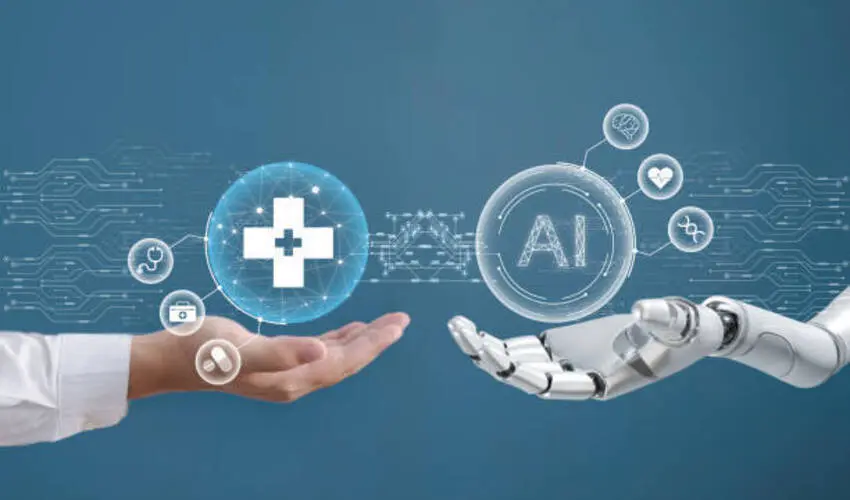AI-powered virtual assistants are software programs that incorporate AI and NLP to perform tasks, offer information, and help users via text-based communication and voice recognition. These assistants can adapt and learn user preferences. This makes them very efficient and customizable.
Introduction
The artificial intelligence continues to dominate almost every industry. Therefore, healthcare also stands at the edge of a transformation. AI-powered virtual assistants (VAs) are defining clinical support, operational efficiency, and patient engagement.
Keeping this scenario under consideration, we are presenting to you some main trends that are driving their evolution. This makes them crucial in the latest healthcare systems.
Advanced Natural Language Processing and Voice Interaction
AI virtual assistants now allow human-like communication due to leaps in speech recognition and NLP. They can precisely explain ambiguous medical inquiries, identify emotional cues, and even process multilingual voice orders. This allows doctors to allocate notes and retrieve patient data hands-free during busy workflows.
Flawless Integration With Wearables, Telehealth, and EHRs
Virtual assistants are popularly embedded within healthcare environments:
- Telehealth and Remote Monitoring: They facilitate follow-ups, symptom triaging, and virtual consultations. Incorporation with fitness trackers and smartwatch trackers allows immediate health alerts and monitoring.
- Electronic Health Records (EHRs): AI-powered virtual assistants can now update and access patient records immediately. This helps in decreasing administrative loads and making rapid decisions.
AI-Powered Clinical Decision Support & Analytics
AI assistants are progressing toward greater intelligence and clinical capability. By analyzing laboratory results, patient history, and symptoms, they can determine risks and suggest possible diagnostic or therapeutic actions. Even their predictive analytics facilitate the early detection of disease and the management of chronic conditions.
Multimodal & On-Device Architectures
The new generation of virtual assistants brings together various interaction modes, such as text and voice, as well as image, gesture recognition, and AR overlays. These permit richer and more intuitive patient and provider engagements, e.g., recognizing symptoms through video or helping guide exercises by means of AR. Edge-based multi-agent architectures, on the other hand, are emerging, allowing quick response times with the extra advantages of privacy and performance when there is no internet connection.
Safety, Explainability & Oversight by Doctors
AI assistance in healthcare is virtually above reproach. Recent studies demonstrate that LLM-based conversational agents enhance patient satisfaction and clarity while maintaining trust and safety when supervised by physicians. In one trial, 95% of AI-handled medical chats were rated “good” or “excellent.”
Tangible ROI, Engagement & Market Growth
The following returns real investments, engagement, and market growth:
- The providers state that to have seen a 47% increase in digital appointment bookings and a decrease of 30% in no-shows following the implementation of AI chatbots.
- Financially, this is quite impressive: Early identification by AI systems of health risks has saved millions on an annual basis.
- The market itself is tapping: It was worth around $1.49 billion in 2024; it is projected to be worth $1.91 billion by 2025, and with a CAGR of 27.9% over the coming decade.
Adoption rates do seem varied, though: a 2025 survey found just 19% of medical practices using virtual assistants for anything, but this figure is expected to grow as benefits become clearer.
Moving Forward: Striking a Balance between Innovation and Care
As AI VAs progress, the need arises to balance the new technology with ensuring safety, empathy, and regulations. Their extension into workflow, multimodal abilities, personalization, and conscientious oversight will ensure that these are assistants that uplift care, not replace it.
Frequently Asked Questions (FAQs)
What are AI virtual assistants in healthcare?
AI virtual assistants are intelligent software systems that use natural language processing (NLP), machine learning, and medical data to interact with patients, doctors, and healthcare staff. They help with tasks such as scheduling, triage, medical record management, and providing health guidance.
How are they being used in 2025?
- Patient Support: Answering medical queries, reminding patients about medications, and offering personalized health tips.
- Clinical Assistance: Supporting doctors with diagnostic suggestions, medical documentation, and treatment planning.
- Operational Efficiency: Automating appointment bookings, billing, and insurance queries.
- Remote Care: Acting as first-line virtual caregivers in telemedicine.
Are AI healthcare assistants replacing doctors?
No. AI assistants support healthcare professionals but do not replace them. They handle repetitive and time-consuming tasks, allowing doctors to focus on complex diagnoses, surgeries, and patient relationships.
What are the benefits for patients?
- 24/7 availability for queries and support
- Faster response times in emergencies
- Personalized health reminders and wellness tracking
- Reduced waiting times in hospitals and clinics
How do they benefit healthcare providers?
- Lower administrative burden
- Improved patient engagement and satisfaction
- Enhanced accuracy in documentation and diagnostics
- Cost savings and better resource allocation
What’s next for AI in healthcare?
- Integrate with wearable devices for real-time monitoring
- Offer predictive health insights (e.g., detecting risks before symptoms appear)
- Provide multilingual and culturally adaptive care
- Collaborate seamlessly with electronic health record (EHR) systems

